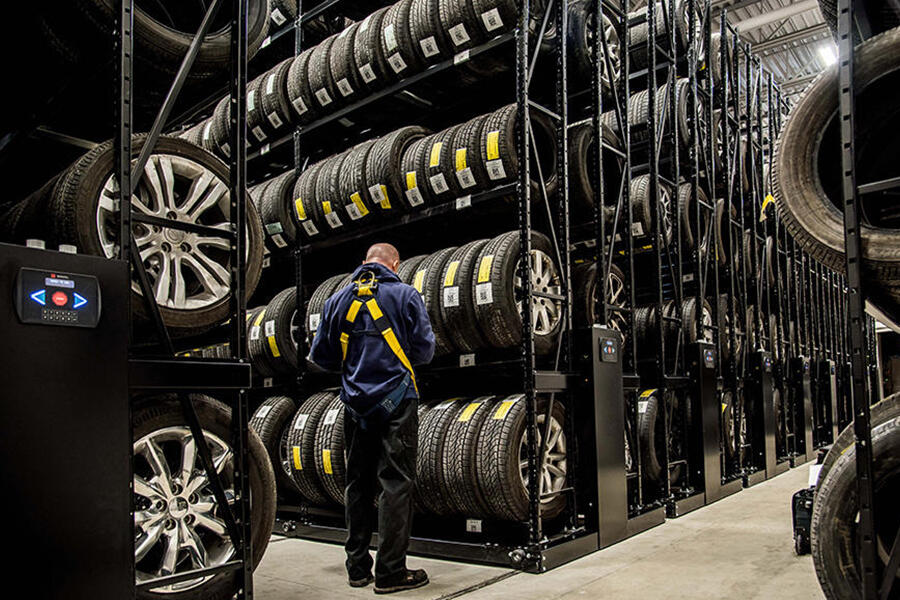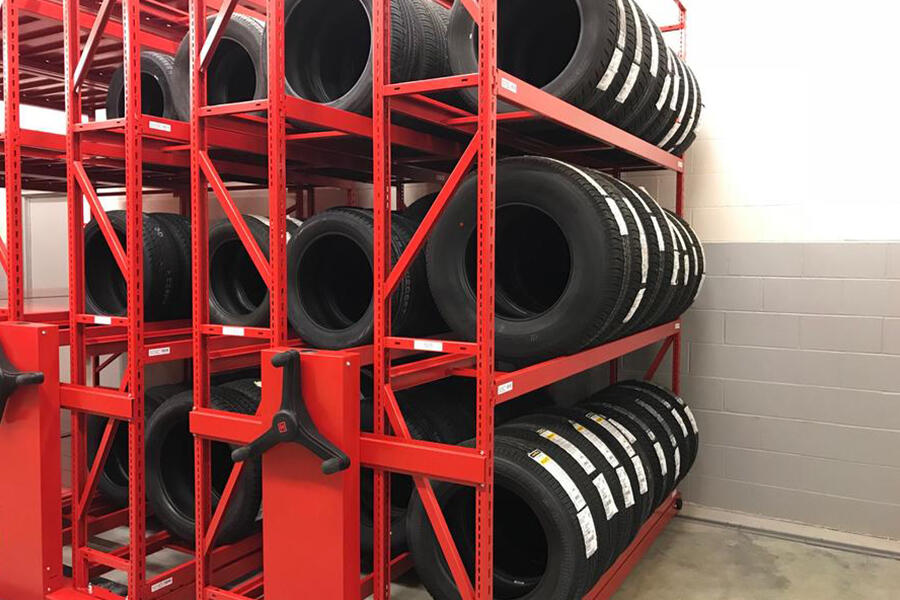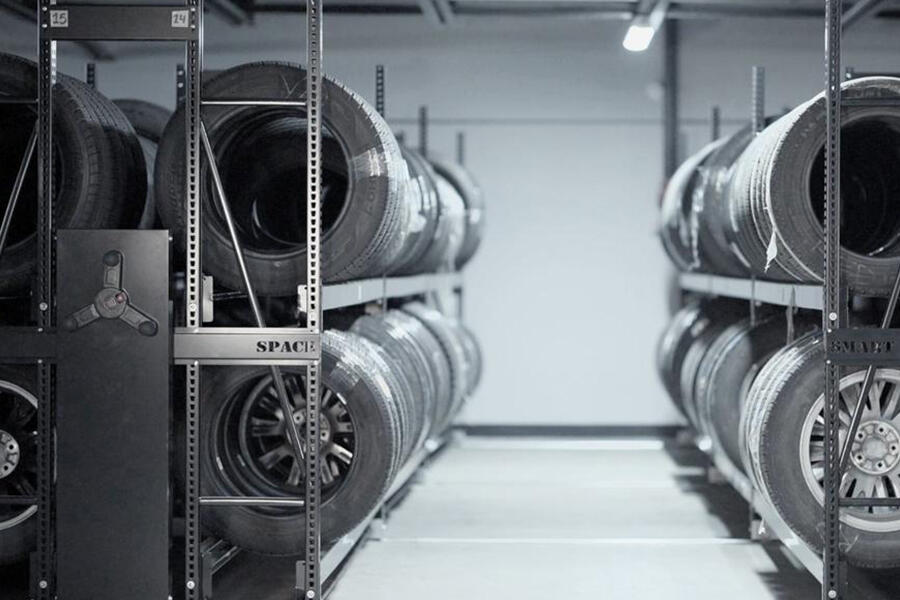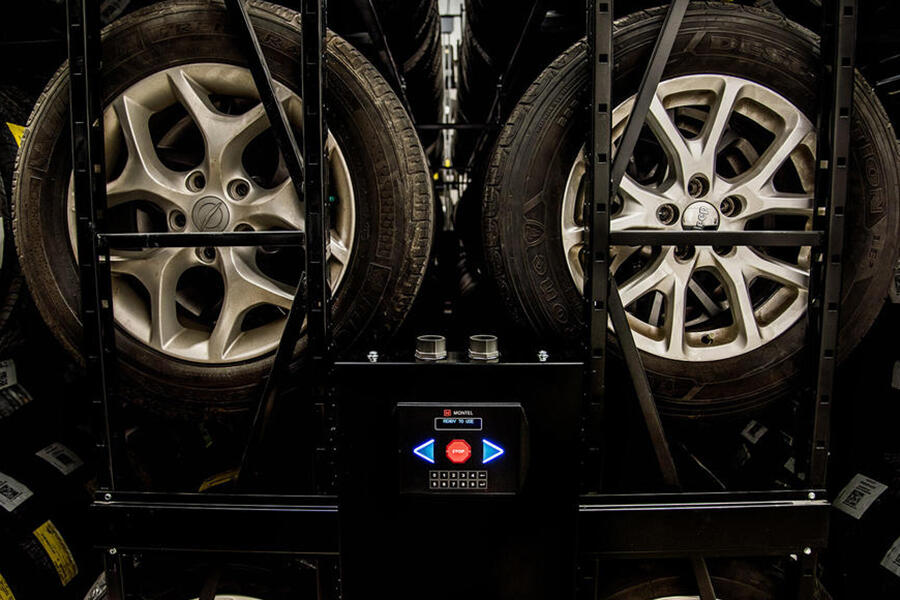The Science of High-Density Mobile Tire Storage
How repair shops and tire retailers store tires can impact not only their performance but the health and safety of drivers.
Where the Rubber Meets the Road: The Science of High-Density Mobile Tire Storage
How repair shops and tire retailers store tires can impact not only their performance but the health and safety of drivers.
In 2019, more than 600 Americans died in car accidents caused by tire failure, and some estimates put the total number of accidents caused by tire failure in the five digits.
In addition to safety risks, busted or bald tires are an environmental risk too. Hundreds of millions of scrap tires are generated annually, and while we’ve made great strides in finding innovative ways to recycle, repurpose, or reuse them, at least one in five still end up in landfills.
To combat these issues, automotive dealerships, repair shops, and tire centers should follow the science adapting their tire storage to preserve tires, protect people on the road, and cut back on the cost of damaged goods.

Exposure risks to tires
If a dealership and repair shop contains devices that produce ozone, such as air compressors or industrial vacuum cleaners, workers should keep them far away from tire storage.
Apart from being a pollutant, ozone breaks down polymer chains in a tire’s molecular structure, thereby weakening it. Cracks along the sidewall can be an early indicator of ozone exposure.
Are tires at your dealership or repair shop in areas with open bay doors or wide showroom windows? Direct sunlight and heat exposure can negatively affect tires—and that doesn’t even address the effects that oil and other chemicals would have on rubber.
Suffice it to say, these businesses can’t store tires just anywhere. Tire manufacturers recommend cool, dry basements, where humidity does not fluctuate seasonally, to minimize loss prevention and preserve tire integrity. Bagging tires is also encouraged, as this can further cut down on exposure and contamination.

Stand, hang, or stack?
Engineers design tires and the synthetic rubber they’re made from to withstand wear and adverse road conditions, but that doesn’t make them impervious to deterioration, even in storage.
Standing tires on their treads places the least amount of strain on them, but doing so is less spatially economical. How many upright standing tires can fit at an automotive dealer or a small repair shop, and what value does that offer those businesses relative to having an extra repair bay or a bigger office?
That said, the other options aren’t great. Stacking tires can distort a tire’s shape and pose safety risks. Hanging tires, as long as they’re on rims, is another viable option, but you run into the same problem as you would with a room of standing tires. How many tire hooks would a business need to justify the investment, and what would they lose in the process?

Putting a new spin on tire storage
High-density mobile tire storage can help the automotive sector store their tires according to the science, in ways that protect drivers and the planet.
Once a dealership or repair shop has isolated its best possible location for tire storage, Montel can customize mobile storage systems like our RACK&ROLL 8MA, or RACK&ROLL 8P to stand tires properly, prolonging their lives and preventing distortion.
With its multiple vertical racks, these installations can accommodate many tires and tires of varying size in a way that makes good long-term business sense, as well as environmental and safety sense. Furthermore, the closed design of a mobile tire storage system can reduce environmental exposure and keep tires off the floor, where water, oils, or chemicals might accumulate accidentally or over time.
For more information on high-density mobile tire storage, contact your local AUthorized Montel Distributor and ask for our free, no-obligation consultation, including 2D and 3D renderings of how better tire storage would look in your current operational layout.
Sources: https://www.continental-tires.com/car/tire-knowledge/tire-care-maintenance/storing-tires https://autoprosmn.com/blog/view/what-happens-when-tires-sit-too-long-in-one-place https://www.tirebusiness.com/article/20070521/NEWS/305219993/tire-storage-dos-don-ts-don-t-just-stack-em-up-and-forget-about-them https://www.chaliklaw.com/blog/causes-of-ozone-cracking/ https://www.livescience.com/ozone.html https://www.mass.gov/files/documents/2016/08/ty/tiremgt.pdf https://archive.epa.gov/epawaste/conserve/materials/tires/web/html/faq.html https://www.nhtsa.gov/equipment/tires


